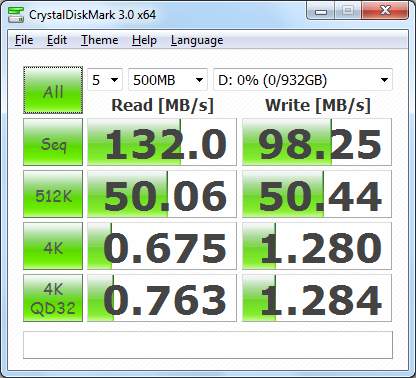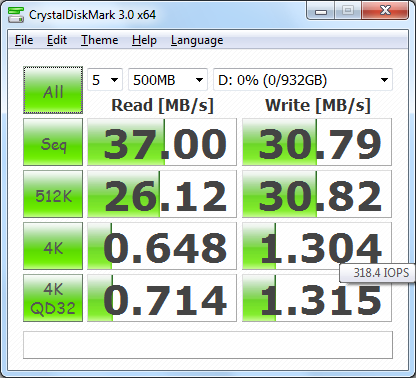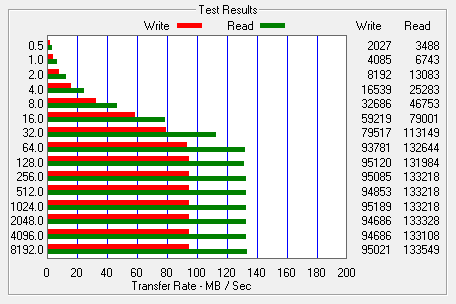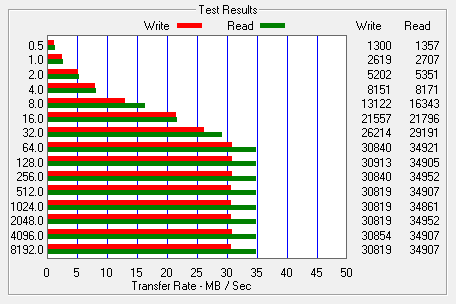The test system used in this review was an HP dc7900. The computer came equipped with an Intel Core 2 Duo E8400 3.0GHz CPU, 2GB of DDR2 800MHz memory, Seagate Barracuda 7200.10 ST3250310AS 250GB SATA hard drive, NVIDIA Quadro FX570 256MB PCIe graphics card, Intel 82567LM-3 gigabit network card and Patriot SuperSpeed USB PCIe host card. For the operating system, I installed a fresh copy of Windows 7 Enterprise.
To test the performance of the Imation Apollo Expert D300, I ran a series of benchmarks using CrystalDiskMark 3.0, HD Tach RW 3.0.4.0, ATTO Disk Benchmark 2.46 and HD Tune Pro 4.50. These benchmarks were first run with the included USB 2.0 adapter and then with the optional USB 3.0 adapter.
CrystalDiskMark 3.0:
First, I ran a few quick tests using CrystalDiskMark. This benchmark tool measures the performance of a storage device by testing its sequential read and write speeds as well as its random read and write speeds using blocks 512K and 4K in size.
The Apollo Expert D300 performed very well when connected to the computer's USB 3.0 port. In our tests, the drive reached speeds as high as 132 MB/s when reading and 98 MB/s when writing.
HD Tach RW 3.0.4.0:
Next, I used HD Tach to test the Apollo Expert D300's read, write and burst speeds as well as its seek times and CPU usage.
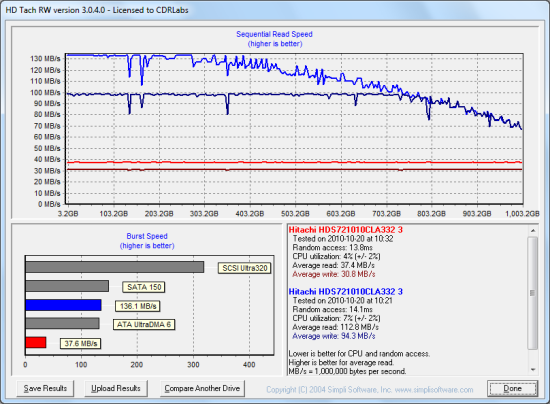
When connected to the computer's USB 3.0 port, the Apollo Expert D300 had average read and write speeds of 112.8 MB/s and 94.3 MB/s, respectively, as well as a burst speed of 136.1 MB/s. The drive wasn't nearly as fast when using USB 2.0 though. Compared to what we saw with USB 3.0, the D300's read and write speeds dropped by two-thirds.
ATTO Disk Benchmark 2.46:
I also used ATTO Disk Benchmark to test the Apollo Expert D300's sequential read and write speeds. The test was run using blocks ranging in size from 0.5KB to 8192KB and the total length set to 256MB.
When tested with ATTO, the Apollo Expert D300's USB 3.0 read speeds topped out at about 133 MB/s and its write speeds at 95 MB/s.


